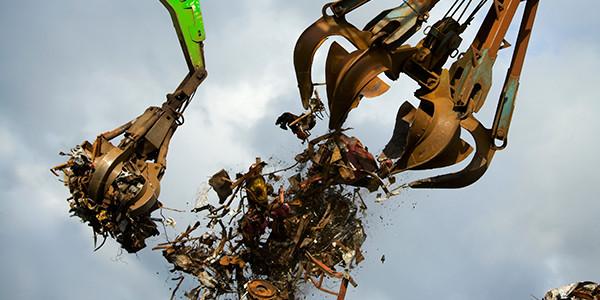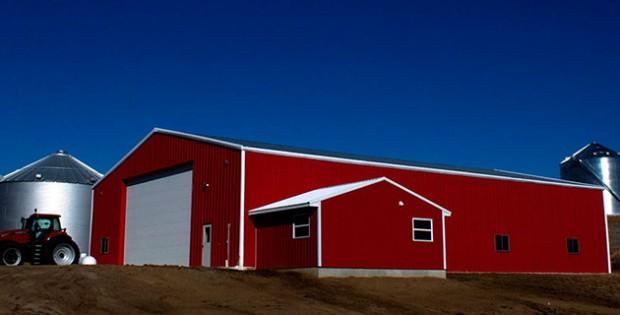30,000 Benefits of a Steel Building

It’s easy to understand the benefits of a steel building; they’re inexpensive and hardly difficult to erect. An engineer, not an architect, can accomplish most of the planning and design elements for you. Another of the many benefits of a steel building is significantly greater span capacities with no interior support beams – which translates to unobstructed square footage.
But consider one significant distinction steel buildings maintain over traditional wood framed buildings. Not one single tree is cut down in the process.
In terms of a carbon footprint, consider this: according to the Idaho Forest Products Commission, the typical 2,400 square foot, single family home requires about 16,000 Board feet of framing lumber. WOW! But that’s not where the forestry carnage ends. An additional 14,000 Board feet of other wood products including plywood, oriented strand board, glulam beams, wood I-joists, laminated veneer lumber, hardboard, particle board and medium-density fiberboard will also be required.
I did some research and found out that it takes about 60 tons (120,000 pounds) of fresh trees to manufacture the 30,000 board feet (the total wood required above) that will be used for one 2,400 square foot single family home.
It will take approximately zero tons of wood to manufacture the zero Board feet of wood used in the erection and framing of a 2,400 square foot steel building, other than the recycled wood chips used as dunnage during shipping.
According to the University of Illinois, an average mature, log-ready tree will yield about 243 Board feet. This means that one 2,400 square foot single family home requires about 120 trees. It takes a tree about two decades to be eligible for logging.
The American Forestry Project reports that an average tree consumes 100 gallons of water per day. This is 36,500 gallons of water per year, or 730,000 gallons of water in the tree’s lifetime – multiplied by 120 trees – and it takes 87,600,000 gallons of water to construct an average 2,400 square foot family home.
It takes zero gallons of water to grow steel. Steel can be recycled in a matter of weeks or months rather than years. And while removing a single 20 year old tree from the planet allows nearly a half ton of carbon dioxide to exist in the atmosphere and eliminates the oxygen needed to keep two people alive, using steel has no adverse impact on the amount of oxygen we breathe – keeping 6 billion people alive.
That’s what we call ‘steel-green math.’
Now let’s examine some other numbers. One logging truck can hold about 4,500 board feet of raw wood. That means it will take approximately six and a half lumber trucks to transport the wood required to erect one family home.
The steel required to construct a 2,400 steel building can easily fit on one truck, with room to spare.
Still not convinced about steel?
Well, now consider this:
- Steel is the most recycled material on the planet, more than all other materials combined. Steel retains an extremely high overall recycling rate, which in 2012, stood at 88 percent!
- The amazing metallurgical properties of steel allow it to be recycled continually with no degradation in performance, and from one product to another. This means that on old car can easily become a new building with no significant wear and tear on the steel.
The sources for steel scrap are plentiful, but are classified into three main categories: home scrap, prompt scrap and obsolete scrap.
- Home scrap is the scrap that is produced from within the mill itself and is available within weeks
- Prompt scrap is scrap that it is produced from manufacturing products from steel, and is available within months (eg: An Armstrong Steel Building).
- Obsolete scrap is scrap produced from steel products at the end of their lives and it may be decades before this scrap is available (eg: Your old jalopy).
While two out of every three tons of new steel are produced from old steel, it is still necessary to continue to use some quantities of virgin materials. This is true because many steel products, like a steel building for instance, remain in service for decades while demand for steel around the world continues to grow.
Beyond the steel scrap itself, the steel industry has long recycled its by-products: mill scale, steelmaking slags, water and processing liquids. Likewise, steelmaking dusts and sludges are processed so that other metals, such as zinc, can be recovered and resused.
Steel is the engine that drives the recycling of many consumer goods as can be seen by the 92.5 percent recycling rate of automobiles, the 90 percent recycling rate of appliances and the 72 percent recycling rate of steel packaging and at LEAST 70% of an Armstrong Steel building.
So while you may spend Earth Day, April 22, mindful of your impact on the planet – know that Armstrong Steel is mindful of this impact the remaining 364 days of the year. We care about the planet and the people who live on it; and people are the reasons we make such an effort to do what we do.
« An Insider on Steel Airplane Hangars
7 Reasons Steel Buildings are the Answer to the Biggest Problem in Legal Marijuana »
Popular Posts

I’ve seen steel buildings increase in popularity every day because builders use these durable, versatile and flexible construction solutions in every application. Not only have homeowners utilized a steel building for residential purposes, but builders have also made additions to their existing property. No doubt that a steel building garage will increase the value of a home, …
Will Adding a Steel Building Increase My Property Value? Read More »

What is the first step of a steel building project, or any construction project for that matter? After you decide to add a new garage, agricultural or commercial building to your property, you’ll most likely start contacting steel building manufacturers for steel building quotes. From there, you can create a timeline for yourself and develop …
Steel Building Quotes: Get a Grasp on Prices and Estimates Read More »

